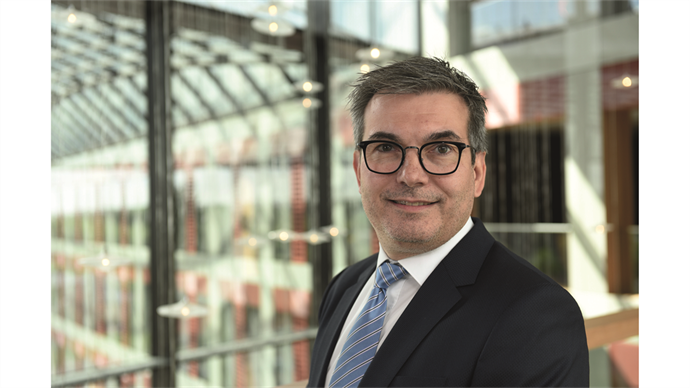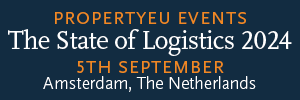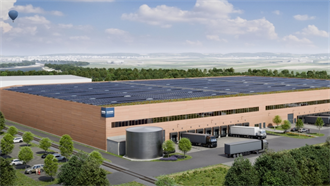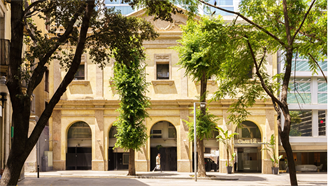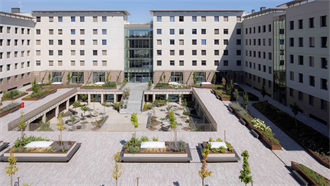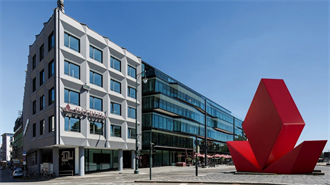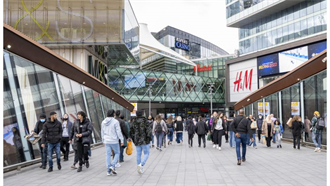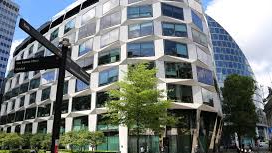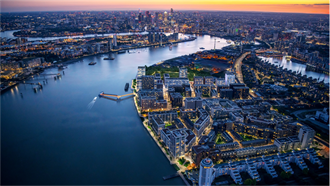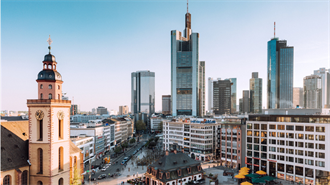Mark Grinis, EY Global Real Estate, Hospitality & Construction Leader, and Dietmar Klos, Real Estate Leader at EY Luxembourg, examine the hot topics currently impacting the real estate sector at a global and local level.
With major transformations taking place throughout its value chain, the real estate sector will recover but will not look the same as before the pandemic, with opportunities arising and market needs adjusting.
Mark Grinis, EY Global Real Estate, Hospitality & Construction Leader, and Dietmar Klos, Real Estate Leader at EY Luxembourg, give an overview of the issues impacting the sector at a global and local level.
The last two years have been unique and the Covid pandemic has interacted with every facet of our industry. Which are the most noticeable implications for the Real Estate (RE) sector and its asset classes?
Mark Grinis: The pandemic let us experience unprecedented times and we can’t lose sight of that. We are looking at a challenging year ahead of us with bumps along the road. For the last decade, macro-economic drivers, such as low interest rates or increased funding activities triggered high prices. The residential market received a boost as costs were manageable and investors’ preferences for yield and moderate valuations provided stability.
However, interest rates are expected to rise (already indicated by the Federal Reserve followed by the European Central Bank with room for interpretations) and depending on how quickly this emerges, it could be a challenge for investors and private home buyers.
Even though fiscal relief packages and governmental support programs delayed retail’s massive lease defaults (in some cases even led to renewed demand for certain office and retail spaces) this market segment has taken an overall toll with store closings and vacancies rising.
Geopolitical tensions will flare up and are expected to affect the sector: the increasing role of governments in economies, climate change and sustainability, the shifts in geopolitical powers and the technological transformation of the sector.
Being digital and having value added technologies and processes will be a significant differentiator in the market, i.e. construction. Market players that leverage modern tools as Building Information Modeling (BIM) or Lean construction can react quickly through on-the-spot analysis and adaptations of contractual clauses, costs, timelines, and quality. Availability of data and flexibility of teams are great contributors to limit exogeneous risk factors for ongoing projects.
Supply chain bottlenecks that caused productions to slow or even halt along with labor shortages were and still are dramatic challenges for the sector and a risk for the global economy.
Office spaces were impacted through falling rents and occupancies and still face a short-term uncertainty as to what extent workers will return to the office.
Climate change is back in the spotlight and growing influence of Environmental, Social and Governance (ESG) factors are expected to remain. In addition to changing work models, office and retail are vulnerable to greenhouse gas (GHG) emission taxes. Office landlords will face higher capex to meet changing GHG emission regulations and tenants’ demands. Older and unrenovated buildings are more prone to tax and regulatory penalties.
How quickly we bounce back varies very much across the globe and reflects a highly unequal global recovery.
Dietmar Klos: The real estate industry has a real chance of recovering fully as the impact caused by the pandemic was less severe than anticipated. However, it will not look the same. The recent challenges have triggered shifts and changes across the entire sector with asset classes taking major hits and becoming unattractive to invest in while others are striving and accelerating. As Mark mentioned, technology and e-commerce trends affect the attractiveness of certain assets, such as warehouses, data centers and telecom towers.
The surge in online spending has increased tenant demand, the result being that particularly logistical properties have been on the positive side of the challenging past months while investors were hesitant about industrial production facilities. The market indeed noticed a significant amount of such properties being offered for sale.
The residential market showed an increased demand for more livable space and a shift to single-family rental property to accommodate the increased time spent at home. Multi-family properties also experienced high tenant demands and rents spiking to record levels, resulting in becoming a favorable asset class to invest in. Likewise for senior housing such as assisted care and living facilities. Additionally, the recovery of this market segment is supported by long-term demographics.
Large shopping malls, local retail, hospitality, and luxury retail businesses tied to international travel were most affected by the recent crisis and are expected to deal with covid-related impacts for a while. Hotels within an easy driving range of highly populated areas appear to recover steadily, especially with vacation travel picking up.
The office sector is in the midst of a major reset, heavily depending on location, building age, green footprint, flexible space layout, ventilation systems, and technological advancements. Going forward, investing in retail and office requires increased effort by leveraging local knowledge and resources to manage risk properly.
This being said, opportunities need to be acted upon and continued uncertainties prepared for. The real estate sector is ready to apply new technologies and innovative solutions to overcome major challenges.
Speaking of ESG, what steps can you recommend addressing climate change and to achieve a zero-emission target within the retail and office asset class?
MG: First of all, the property sector is the largest contributor to greenhouse gas emissions and buildings account for 40% of global energy use and carbon emission. Thus, the players in this sector can contribute greatly by stepping up and leading by example to reduce the climate’s worst impacts and increase resilience to environmental risks. Secondly, it really depends on the property type and age. It is not a question of whether it should be done but rather how we all do business now. It is a competitive advantage to have a green footprint.
All targets are more likely to be achieved if landlords and tenants collaborate to address a changing climate that affects their business. As we at EY must take actions ourselves to achieve net zero emissions, we follow certain steps, which includes prioritizing sustainability firstly during the site selection process and equally as much as location, cost, and branding.
We encourage starting conversations on sustainability with prospective landlords very early, which will ensure best efforts to include Green Lease Language (i.e. hydro power) in all leases or amendments. For existing landlords, we encourage them to commit to introducing Science Based Targets (SBT).
DK: We also see the EU Sustainable Finance Action plan and regulation like the Sustainable Finance Disclosure Regulation that impact the RE sector from the investment and asset management perspective, which is a hot topic for a financial hub like Luxembourg. Similarly, we see increasing expectations from end investors to assess how real estate players integrate ESG factors before making their decision. As you say, it is no longer a question of whether it should be done, but it is clear that transformation is necessary across the whole value chain.
Offices need to be more than a four-wall business, what can landlords and businesses do to attract employees back to their offices?
MG: The office is no longer seen as a fixed asset, but an overall workplace experience that is not tied to a physical location. While the majority of business leaders think that hybrid work is here to stay, recent studies show that only a few businesses have already started to take official steps towards planning the future of work. The wait-and-see attitude needs to be overcome. Businesses must establish a new approach to working that puts humans at the center. A transition from traditional office space business to more of a hospitality business.
The office experience must provide greater benefits than the home environment to encourage employees to want to come to the office. It must be genuine. We need to upgrade technology and must consider the shift in employee needs. 9 out of 10 employees feel strongly about flexibility (when and where to work) and that they are indeed more productive when working virtually.
The EY Work Reimagined global employee survey 2021 revealed 54% of employees would quit if a certain level of flexibility is not provided. Also, trends towards digital transformation have accelerated. The office of the future needs to consider technology, workplace design, sustainability, and the overall employee experience.
DK: Redesigning work is crucial when driving growth, anticipating uncertainty, and securing top talents. This is a major opportunity for businesses to transform the working environment and will look very different from business to business, from figuring out the hybrid work model, applying changes to existing processes and operating models, revamping strategic planning, and attracting and retaining talent.
Companies that were most resilient during covid-impacted remote work had already invested in an agile and digital infrastructure and were able to adapt quickly and ensure continuation of business.
In recent months, those businesses that have started to implement new processes and invest in tools supporting digital work, achieved a higher rate of satisfaction, productivity, and cost reductions through flexible and shorter commitments. Offices in prime locations that provide more than just a work environment by enhancing overall well-being, will be preferred by employees when returning.


